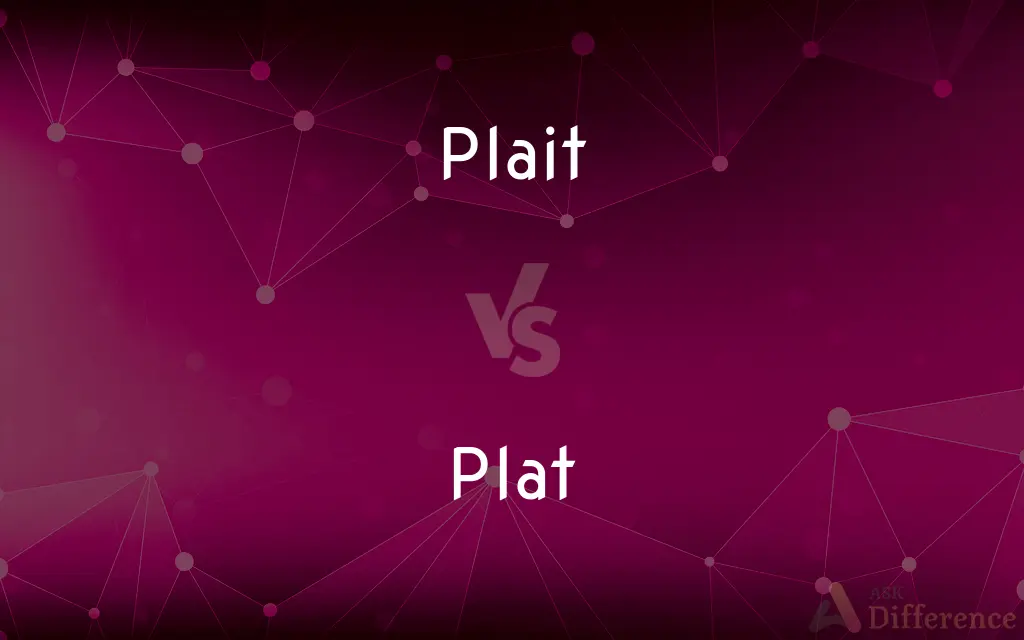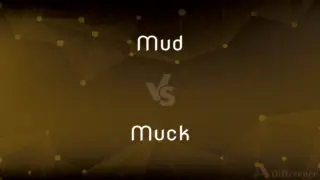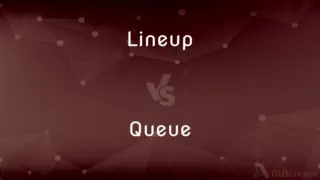Plait vs. Plat — What's the Difference?
Edited by Tayyaba Rehman — By Fiza Rafique — Updated on February 28, 2024
Plait refers to a style of braiding hair or fabric, whereas plat is a map, drawing, or plan, especially of land divided into plots.

Difference Between Plait and Plat
Table of Contents
ADVERTISEMENT
Key Differences
Plaiting involves intertwining strands of hair or material to create a braid, a technique used for decorative or practical purposes in hairstyling and textiles. On the other hand, platting is the process of mapping out land divisions, often used in real estate, surveying, and urban planning to detail plots of land.
A plait is recognized for its aesthetic appeal and functionality, serving as a hairstyle that can be both simple and intricate. Plats, however, are valued for their accuracy and legal significance, providing detailed representations of land divisions, including boundaries and plot sizes.
The technique of plaiting can be ancient, tracing back to various cultures worldwide for both personal adornment and in creating textile goods. Plats require technical knowledge of surveying and legal standards, embodying a more modern, formal practice associated with property rights and development.
Plaits can be created with any flexible material, including hair, yarn, or strips of fabric, emphasizing the versatility of the technique. Platting, however, involves precise measurements and legal descriptions, typically resulting in official documents used in land transactions and zoning.
Plaits are primarily made by hand, requiring skill and sometimes creativity, plats are created through a combination of field surveying and drafting, often necessitating the use of specialized software and equipment in contemporary practice.
ADVERTISEMENT
Comparison Chart
Definition
A braid of hair or fabric.
A map or plan showing land divisions.
Purpose
Decorative or practical in hairstyling and textiles.
Legal and planning purposes in real estate.
Technique Origin
Ancient, cultural.
Modern, technical.
Material/Tools
Flexible materials like hair or yarn.
Surveying tools, drafting software.
Required Skills
Manual dexterity, creativity.
Technical surveying, legal knowledge.
Compare with Definitions
Plait
A form of braiding used in various cultures.
The plait represented a significant cultural tradition.
Plat
A drawing used in urban planning.
The city council reviewed the plat for the proposed park.
Plait
A hairstyle featuring braids.
For the wedding, she chose an elegant plait.
Plat
A representation of land boundaries.
The surveyor produced a plat to resolve the boundary dispute.
Plait
A technique used in textile arts.
The plait on the edge of the cloth added a decorative touch.
Plat
A legal document detailing land divisions.
The plat was filed with the county for official records.
Plait
A method of intertwining three or more strands.
The basket was made using a traditional plaiting technique.
Plat
A map showing features of a plot of land.
The developer shared the plat for the new subdivision.
Plait
A single length of hair, straw, rope, or other material made up of three or more interlaced strands
She wore her dark hair in plaits
Plat
A plan for subdividing land into lots.
The plat outlined each lot's dimensions.
Plait
Form (hair, straw, rope, or other material) into a plait or plaits
Her hair had been plaited and coiled at the back of her head
Plat
In the United States, a plat ( or ) (plan) is a cadastral map, drawn to scale, showing the divisions of a piece of land. United States General Land Office surveyors drafted township plats of Public Lands Surveys to show the distance and bearing between section corners, sometimes including topographic or vegetation information.
Plait
A braid, especially of hair.
Plat
A piece of land; a plot.
Plait
To make by braiding.
Plat
A map showing actual or planned features, such as streets and building lots.
Plait
A braid, as of hair or straw; a plat.
Plat
A map showing the boundaries of real properties (delineating one or more plots of land), especially one that forms part of a legal document.
Plait
A braid, as of hair or straw; a plat.
Plat
To lay out in plats or plots, as ground.
Plait
Weave into plaits;
Plait hair
Plat
A small piece or plot of ground laid out with some design, or for a special use; usually, a portion of flat, even ground.
This flowery plat, the sweet recess of Eve.
I keep smooth plat of fruitful ground.
Plait
A braid or weave of hair or fabric.
She wore her hair in a tight plait down her back.
Common Curiosities
How is a plait made?
A plait is made by intertwining three or more strands of flexible material, such as hair or yarn.
Can anyone create a plat?
Creating a plat typically requires knowledge of surveying and legal standards, often necessitating a licensed surveyor.
What does plat mean?
Plat refers to a map, drawing, or plan detailing the divisions of a plot of land, often for legal or planning purposes.
Are there different types of plaits?
Yes, plaits can vary widely, from simple three-strand braids to complex patterns and designs.
How is a plat used in urban planning?
In urban planning, a plat is used to designate land use, plot divisions, and infrastructure layout.
What information does a plat provide?
A plat provides detailed information on land divisions, including boundaries, plot sizes, and sometimes topographical features.
What is a plait?
A plait is a braid or weave, commonly of hair or fabric, used for decorative or practical purposes.
Why are plats important in real estate?
Plats are crucial for defining legal boundaries, facilitating property sales, development, and zoning decisions.
Can plaits have cultural significance?
Yes, plaits often carry cultural significance, symbolizing status, heritage, or tradition in many societies.
How do you care for plaits?
Care involves regular maintenance to keep them neat, clean, and free of tangles.
Who can draw a plat?
A plat is usually drawn by a professional surveyor or a civil engineer, following specific legal and technical guidelines.
Is plaiting limited to hair?
No, plaiting can also involve fabric, yarn, or any flexible material suitable for braiding.
What is the legal significance of a plat?
A plat is legally significant as it officially documents land divisions, crucial for property rights and transactions.
What skills are needed for plaiting?
Plaiting requires manual dexterity and sometimes creativity, especially for complex designs.
What makes a plat official?
A plat becomes official when it is approved by relevant authorities and recorded in public records.
Share Your Discovery

Previous Comparison
Mud vs. Muck
Next Comparison
Lineup vs. QueueAuthor Spotlight
Written by
Fiza RafiqueFiza Rafique is a skilled content writer at AskDifference.com, where she meticulously refines and enhances written pieces. Drawing from her vast editorial expertise, Fiza ensures clarity, accuracy, and precision in every article. Passionate about language, she continually seeks to elevate the quality of content for readers worldwide.
Edited by
Tayyaba RehmanTayyaba Rehman is a distinguished writer, currently serving as a primary contributor to askdifference.com. As a researcher in semantics and etymology, Tayyaba's passion for the complexity of languages and their distinctions has found a perfect home on the platform. Tayyaba delves into the intricacies of language, distinguishing between commonly confused words and phrases, thereby providing clarity for readers worldwide.
















































